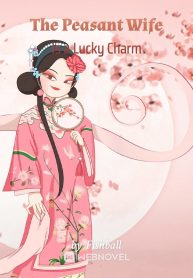Well, Xie Juan Wang was directly classified as a member of the traditional Chinese medicine circle by the patient's family this time.
A group of Western medicine bigwigs were in a hurry to help Xie Juanwang clarify: "She is a Western doctor, not a Chinese doctor!"
“I know, but I heard that her Chinese medicine is also very good.” The family member said.
how? Aren’t big guys who are very good at Chinese and Western medicine not allowed to appear?
Is there such a big shot in the history of domestic medicine?
some.
It was quiet.
What the approval of the patient's family means is very clear to the doctors. It means that the king of Xiejuan is indeed going straight to the ceiling of the medical profession, the highest academic palace in the country.
Dr. Xie Wanying herself said: "I am still learning."
Juan Wang’s humility is from beginning to end.
Dr. Xie Wanying added that her spirit of seeking truth from facts is not excessive modesty, saying: "I don't know how to diagnose pulse."
The difficulty of pulse diagnosis, Sister Wen even said that she was not good at it. As a beginner, she was even more confused.
It is estimated that it is more difficult to check the pulse of children than that of adults because children have short hands, which is called Cunkou shortness in Chinese medicine.
We know that the three fingers commonly used by doctors to check the pulse of adults are called Cun Guan Chi, which means they are ranked in order.
Cun is the position closest to the end of the limb to feel the pulse. According to the operation details of pulse diagnosis in traditional Chinese medicine, the doctor should use his index finger to cun the patient's pulse.
The doctor’s **** is placed between the three fingers when diagnosing the pulse and is responsible for checking the pulse.
Therefore, when doctors make a pulse diagnosis, they usually use their **** to determine the position of the guan. In modern anatomy, this position is on the inside of the high posterior palmar bone and is easiest to feel.
The doctor's ring finger is placed on the ulnar pulse behind the Guan Guan. After finding the patient's pulse diagnosis position, the doctor bends three fingers in an arch shape, aligns the fingers on a horizontal line, and presses the three fingers at the same time, using the fingertips to touch the pulse under the patient's skin. This is called total pressure.
The general principle is the concept that embodies the most valuable medical experience of traditional Chinese medicine, which is a holistic view of the human body. After judging the patient's overall pulse pulsation feeling. Then look at the patient's condition. If abnormalities are found at key parts, such as guan, cun or chi, take a separate pulse cut to carefully study the symptoms of the patient's condition in a certain part.
Some patients have long bodies and long hands, while others have short bodies and short hands. To achieve the correct pulse-taking position by pressing down with three fingers, the doctor must adjust the distance between the three fingers to suit.
Let’s talk about the child. The child’s hands are so short that the doctor can press down with one finger to cover the full inch of the ruler. Therefore, the doctor can only use one finger to diagnose the child’s pulse, which is called one thumb and cannot measure the ruler.
After listening to what the Chinese doctors said, the Western doctors realized that Wang Gang took the initiative to say this, revealing her own strong ambition: I just want to learn the most difficult thing and push it to the extreme.
Leader Cui silently walked outside the crowd and let out a long breath, thinking that Classmate Tan told him to take more care of pregnant women, but how could he take care of a roll king?
The surrounding circle continues to be quiet, everyone is waiting to study together, or: are they extremely looking forward to seeing the rollover incident?
I heard that students who have the hardest time learning how to speak are suspected of having high self-esteem. Professor Jiao felt that he needed to take a test to thank his classmates and asked, "Do you know what's special about the pulse of children?"
Pulse condition refers to what comes out of pulse diagnosis, rather than the pulse diagnosis process just mentioned which is different from adults.
Dr. Tse Wanying said: "It is at least clear in Western medicine that infants and children have faster pulses than adults."
The basal metabolic level of children is faster than that of adults because they need to grow.
Such basic differences will inevitably be reflected in the pulse condition of traditional Chinese medicine. In other words, Chinese medicine is also inseparable from the physiological basis of the human body.
“Are there any other specific differences apart from speed?” Mr. Jiao increased the difficulty of the test questions.
Dr. Xie Wanying answered in an orderly manner: "Compared with the physiological vascular sclerosis caused by the deterioration of body functions in the elderly, the opposite is true in children. The pulse feels softer when touched."
Not only Mr. Jiao, but also a circle of people looked directly at King Xie Juan: Are you really a master of both Chinese and Western medicine?







